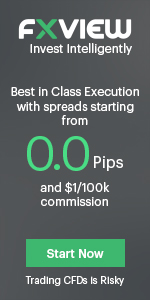Forex trading, also known as Foreign Exchange Trading, is a decentralized market where participants trade in currencies. It offers individuals and institutions the opportunity to speculate on the price movements of different currency pairs. One of the key concepts in forex trading is margin, which allows traders to control larger positions with a smaller amount of capital.

Understanding Margin
In forex trading, margin refers to the amount of money that a trader needs to deposit in their trading account to open and maintain a position. It is often expressed as a percentage of the full position size. Margin requirements vary depending on the broker and the currency pair being traded.
When a trader opens a position, they are required to deposit a certain percentage of the total position value as margin. This initial margin acts as a form of collateral, providing the broker with a cushion against potential losses. The remaining funds needed to open the position are typically borrowed from the broker, allowing traders to leverage their positions.
Leverage is a double-edged sword in forex trading. While it can amplify profits, it can also magnify losses. Traders should exercise caution and use proper risk management techniques when trading on margins.
Margin Calculation
The margin required to open a position is calculated based on the leverage ratio and the size of the position. Leverage is expressed as a ratio, such as 1:50 or 1:100, which indicates the amount of leverage a trader can use compared to their deposited funds.
For example, if a trader has a leverage ratio of 1:50 and wants to open a position worth $10,000, they would need to deposit $200 (10,000 / 50) as margin. The remaining $9,800 would be borrowed from the broker.
It is important to note that margin requirements can change depending on the broker, the currency pair, and market conditions. Traders should always be aware of the margin requirements before opening a position.
Margin Call and Stop Out
Margin call and stop out are two important terms related to margin trading. A margin call occurs when the account equity falls below a certain level, usually set by the broker. When a margin call is triggered, the trader is required to deposit additional funds to meet the margin requirements or close some of their positions to reduce the risk.
If the trader fails to meet the margin call, a stop out may occur. A stop out is when the broker automatically closes some or all of the trader’s positions to prevent further losses. This is done to protect both the trader and the broker from excessive risk.
The Risks and Benefits of Margin Trading
Margin trading offers several benefits, including the ability to control larger positions with a smaller amount of capital. This could potentially lead to higher profits if trades are successful. However, it is important to remember that margin trading also carries significant risks.
The use of leverage can amplify both profits and losses. A small price movement in the wrong direction can result in substantial losses, especially if the trader has used high leverage. Traders should carefully consider their risk tolerance and use appropriate risk management strategies when trading on margins.
Furthermore, margin trading requires a high level of discipline and knowledge. Traders need to have a solid understanding of the market, technical analysis, and risk management techniques to be successful.
Conclusion
Margin is a fundamental concept in forex trading that allows traders to control larger positions with a smaller amount of capital. It is important for traders to understand how margin works, including margin calculation, margin call, and stop out levels. While margin trading offers potential benefits, it also carries significant risks. Traders should approach margin trading with caution, use proper risk management techniques, and continually educate themselves to improve their trading skills.






